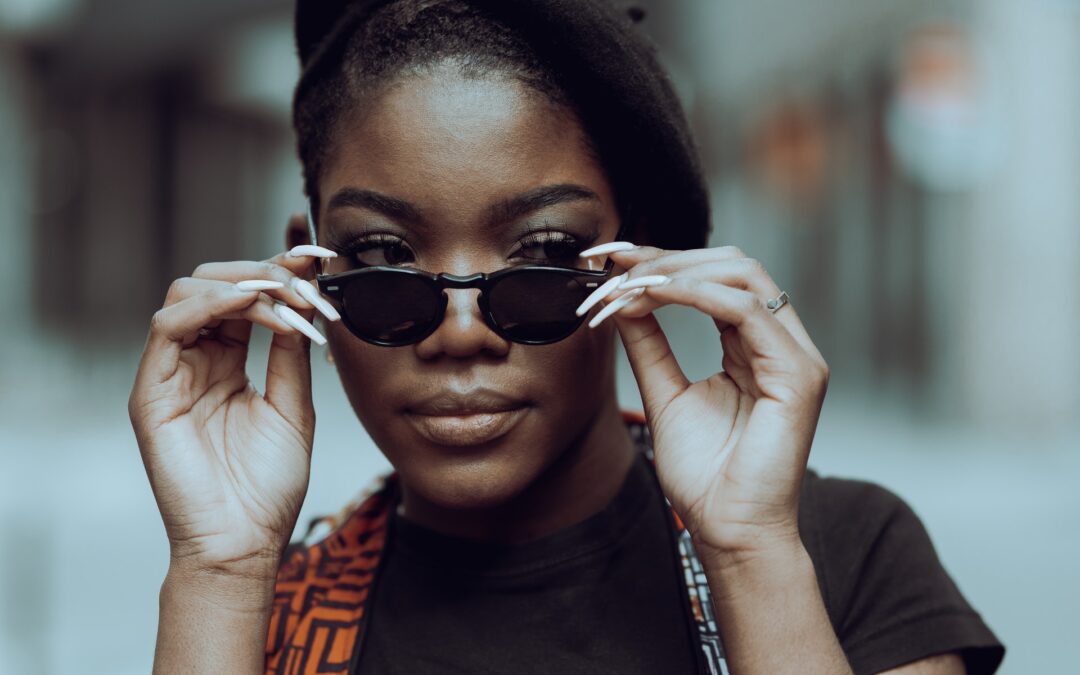As the days grow longer and warmer, we are increasingly drawn outdoors to enjoy the fresh air and sunshine. And though we have all heard about how important it is to shield our skin from the potentially damaging rays from the sun, it’s also important to remember to protect your eyes with the right sunglasses. Though they can be a stylish addition to your wardrobe, sunglasses are far more than just a fashion accessory.
When choosing a new pair of sunglasses there are a few key things to keep in mind. Most important is ultraviolet (UV) protection, which guards against damage to the lenses and corneas of your eyes.
The next most important is to choose a pair that fits well on your head and gives you the right amount of coverage. You should be sure to wear sunglasses any time you are outdoors, regardless of the time of year and whether its sunny or not, as UV rays can penetrate cloud cover and still do damage.
The damage caused by UV rays includes an increased risk of developing cataracts and macular degeneration. Sunglasses can also protect the delicate skin around the eyes and the eyelids from the damaging effects of the sun, such as skin cancer and premature wrinkles.
Following are the most important things to look for when shopping for the right pair of sunglasses:
Full Protection from UV Rays
Your sunglasses should be labeled as being able to filter at least 99% of both UVA and UVB rays. They may also be labeled as UV absorption up to 400nm, which is the same as 100% UV protection. While UVA rays are the one’s your eyes primarily absorb (and are good to avoid), UVB rays are the most damaging. As the American Academy of Ophthalmology notes, long-term exposure to ultraviolet (UV) radiation in sunlight is linked to eye disease. UVB radiation is considered more dangerous to eyes and skin than UVA radiation.
Choose the Right Color
Gray, green or brown lenses are best for overall reduction of brightness without excessive color distortion, which is good if you will be using them primarily while driving, so as to be able to see things accurately, such as the colors of traffic lights.
Yellow, amber or gold lenses are often preferred by skiers and snowboarders, as they offer better depth perception and boost contrast in low light conditions. A mirrored coating will reduce glare, but can make objects appear darker than they actually are.
Check for Lens Quality
The quality of the lenses in non-prescription sunglasses varies widely, and the most expensive are not necessarily the best. To check for lens distortion, hold the glasses at a slight distance and cover one eye. Focus on a vertical line, such as a floor tile or window pane, then move the glasses left to right and up and down while checking to see if the line bends or wiggles, especially in the middle of the lens. If so, choose another pair.
Choose a Wraparound Style
These types of sunglasses afford more protection, as the sun’s rays can get around even the best made small lenses. They also provide more protection from flying debris such as dust and sand.
Find the Right Fit
Your sunglasses should fit snugly on your nose and ears, without pinching, rubbing or feeling too heavy. Their weight should be distributed evenly between your ears and nose and your eyelashes should not touch the lenses.
The importance of wearing good sunglasses can’t be overstated. For the long-term protection of your sight, they are well worth the investment (and besides, they just might make you look cool and glamorous!)

